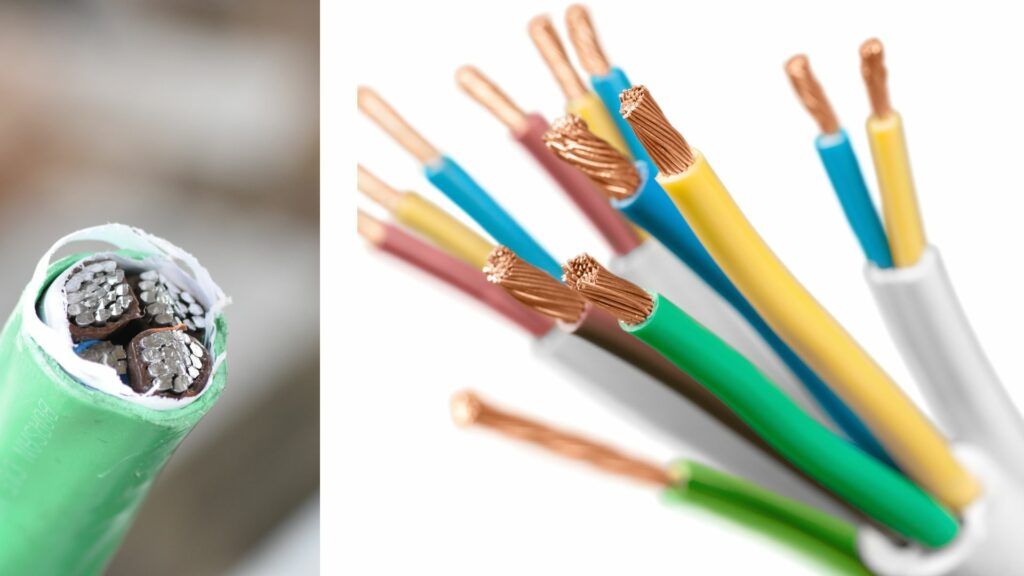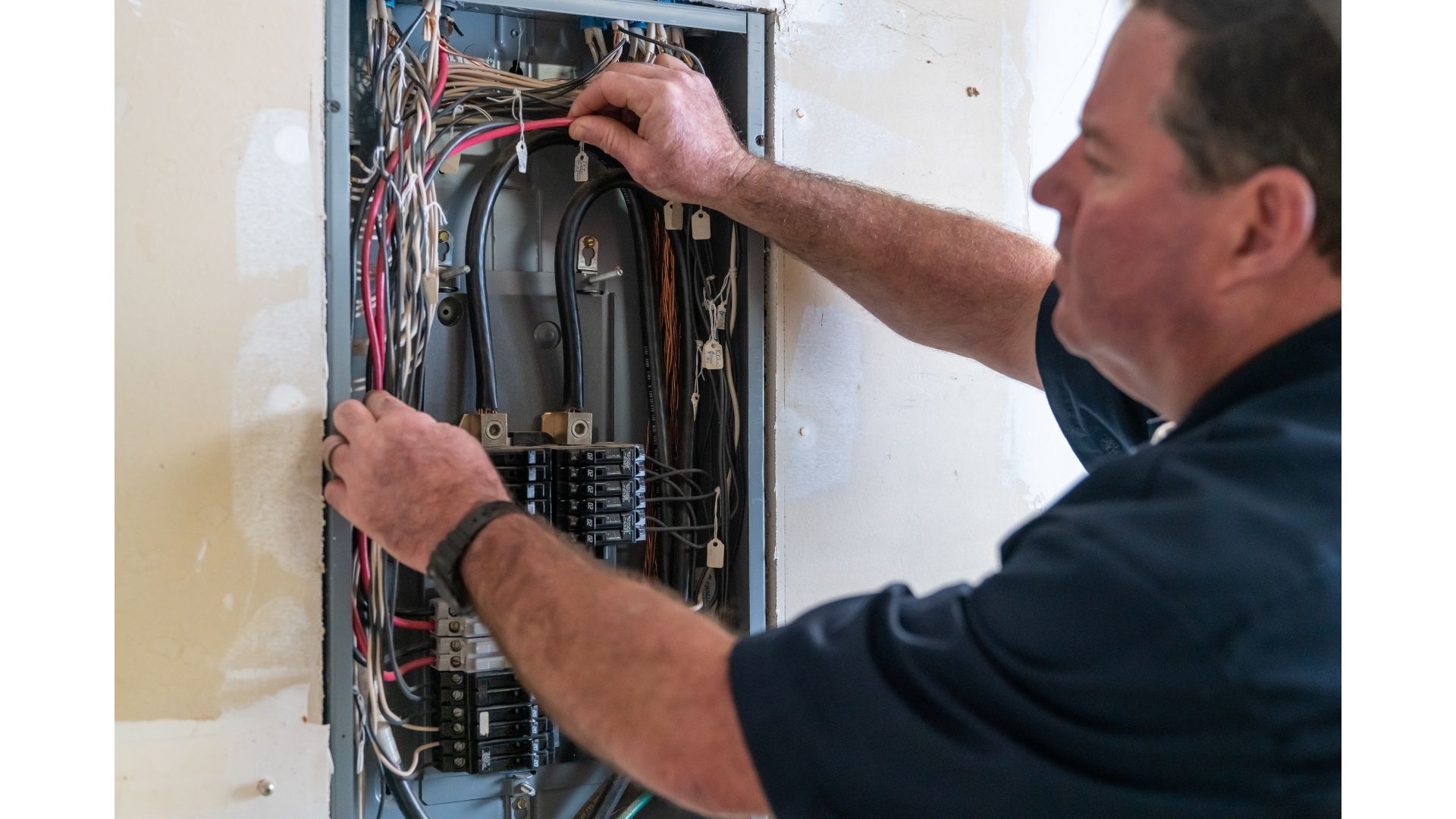Ground wires are indispensable because they provide an alternative path for excess current during an emergency. You can’t trust these cables to protect you unless you secure the right size. But what is the correct ground wire size for a 100 amp service? This guide will tell you.
Ground Wire Size For 100 Amp Service
The size of ground wire for 100 amp service is 8AWG or 6AWG.
If you’re a layperson, you will take several considerations into account before answering this question, including:
1). Subpanel
First of all, you rarely see 100-amp services in residential settings. 200A is the standard, especially for conventional homes with kitchen and laundry appliances, not to mention heating and cooling units.
Larger houses may prioritize 250-amp services. However, 200A is sufficient for your basic needs. While 100A can work, don’t be surprised if you occasionally overload your system. If someone wants you to install a grounding wire for their 100 amp service, it is probably a sub-panel.
People use subpanels to accommodate new circuits. They can also extend your home or commercial building’s electrical service to a structure in the vicinity. This matters because the location of the subpanel affects the distance the wires have to cover. And the distance influences the wire size.
2). Hot/Neutral VS Ground
Common sense will tell you that the hot, neutral, and ground conductors should be the same size. After all, the hot wire carries the power from the panel. The neutral wire takes that same power back, and the ground line will lead any excess current to the earth in the event of a surge.
3 and 2-gauge wiring can withstand 100 or more amps. In other words, you wouldn’t be wrong in assigning 3 and 2AWG lines to a 100 amp service. Although, 4AWG wire is also adequate if the distance between the panel and load is less than 50 feet.
Does that mean every home with a 100 amp service requires a 4 – 2AWG ground wire? Not necessarily. Surprisingly, the ground wire’s size doesn’t have to mimic the gauge of the neutral and hot wires.
You can make the ground wire smaller without endangering your home. First of all, it only carries electricity when a surge occurs. Surges and spikes are rare. Most people go an entire year without recording a surge.
But even if a surge occurs, ground wires carry electricity for a fraction of a moment before the breaker trips. As such, even if the current exceeds the capacity of the ground wire, it won’t transmit that current long enough to overheat.
This is why you can also use 8AWG and 6AWG. But what if you prefer 3AWG or 2AWG? What if you’ve decided to apply the same gauge to the hot, neutral, and ground wiring? That is perfectly acceptable.
The ground wire can be smaller or bigger than the neutral and hot wires.
Things To Consider To Choose Perfect Ground Wire Size For 100-Amp Service
1). Distance
Technically speaking, the distance cannot change a wire’s amp rating. For instance, 4AWG will carry 95 amps regardless of whether it covers 50 or 100 feet. However, the distance will influence the conductor’s ability to carry those 95 amps safely.
Longer wires have more resistance than shorter wires. The resistance will essentially consume the current, reducing the amount of power your applications and appliances will receive.
This is why projects that require longer conductors use higher gauges. If your appliance can run on 6AWG at 20 feet, you are better off raising the wire size to 4AWG at 50 feet.
Even though ground wires with smaller gauges are less likely to overheat because they only carry electricity on those rare occasions when a surge occurs, these cables can still overheat if they are too thin and they have to cover long distances.
2). Material

Is copper better than aluminum for grounding? In truth, both materials can work if you select the correct gauge. I suggest you use copper wire because it is highly conductive, heat resistant, and malleable.
But aluminum is cheaper and easier to install. You can compensate for copper’s superior conductivity by selecting an aluminum line with a higher gauge. For instance, you can replace 8AWG copper with 6AWG aluminum.
If you have the money, copper is your best option. But if you want to reduce your expenditure, aluminum is an acceptable alternative.
3). Cable Type
Contractors have numerous types of cables at their disposal. The application and setting will influence your decision in this area. For instance, you typically find thermoplastic high heat wiring nylon in houses.
On the other hand, commercial applications require stranded steel armored cable. Talk to a local contractor about the rules. Some regions expect contractors to use armored cabling because the metal jacket acts as the ground.
The conditions in the environment may also encourage you to prioritize flame retardant mechanisms to keep the wires safe.
4). Regulations
Speaking of rules, you should consult them to determine what they have to say about grounding. Naturally, every regulatory body expects you to include grounding mechanisms. You can’t wire a house without including the grounding.
But what materials do they expect you to prioritize for the ground rods? What about the best location to insert the grounding rods? Some local authorities will specify the ground rod length and diameter, type of grounding wire, clamps, and more.
5). Conduit
Does the grounding wire require a conduit? Conduits protect cables from harm. Some tubes can provide grounding. However, people hate them because running a conductor through a pipe is time-consuming and challenging.
Although, your local code may not give you a choice in the matter. The rules usually encourage contractors to keep bare ground conductors in pipes, especially if mechanical damage is a prominent concern.
The size of the conduit depends on the number of wires it must accommodate. Conductors in 100-amp services use schedule 40 and 80 PVC conduits. It is much easier to pull aluminum through a tube than copper. Keep this in mind when you’re selecting the material.
What About a 100 Amp Subpanel Wire Size?
The grounding wire size for the main panel can also work for the subpanel, especially if you’re dealing with a 100-amp service in both cases. 8AWG or 6AWG will do. Although, you are free to use the same wire size as the neutral and live.
Related post:

